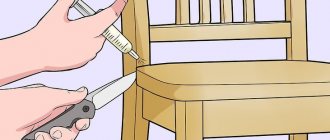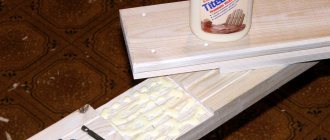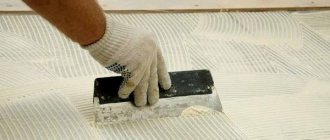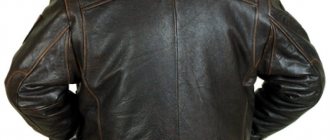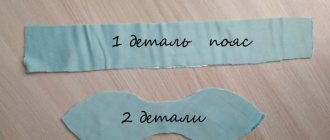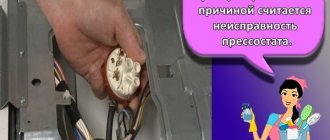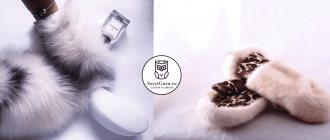In every home you can find dishes and decorative items for interior decoration made from porcelain and ceramics. These are Soviet collectible table setting sets, figurines and other trinkets dear to the heart, many of which were inherited from parents. And sometimes, no matter how carefully they are handled, products often break due to carelessness. Let's look at the methods and determine how and with what to glue porcelain and ceramic products with our own hands, so that the product will please the eye for many years to come.
- Types of glue for porcelain and ceramic products
- How can you glue porcelain?
- Glue for gluing ceramics
- Universal glue for ceramic and porcelain products
- Ways to glue porcelain with your own hands
- Instructions for gluing ceramics at home
- Finally
First, you need to figure out what to do if your favorite porcelain figurine or mug given by your mother breaks. So, before starting repairs, you need to choose the appropriate adhesive for the fragile product.
Causes of cracks and breakages of ceramic and porcelain products
Despite their relative hardness, objects made from these materials often break. For such products, sometimes a point mechanical impact is enough for defects to appear on them.
Often the causes of breakdowns are:
- incorrect installation (applies to the sink);
- temperature changes;
- impacts of objects during their washing, falling due to the carelessness of the owner, etc.
Cracks can appear in various situations. But most often, dishes, figurines and other products break due to improper use and careless handling.
Method 2. Based on shellac and turpentine
Another option for gluing ceramics.
Ingredients:
- turpentine;
- light shellac.
Combine the ingredients and place the container over low heat. The mixture requires cooking until the shellac has completely melted. During preparation, the glue is constantly stirred until a homogeneous consistency is obtained. This composition takes longer to harden, so it can be prepared as a backup option. The mixture is allowed to cool and, divided into portions, placed in storage or used to treat cracks or chips in the toilet bowl.
As necessary, it is heated and applied in a thin layer to the surfaces to be bonded. As a result, the reinforced parts are compressed, which ensures their tight adhesion. The resulting glue residue should be wiped off immediately.
How to glue ceramics to ceramics
To figure out how to glue ceramics, you need to choose the right adhesive mixture for the material. To do this, you need to adhere to the following tips:
- check on the packaging how strong the seam should be;
- read the instructions for applying the composition and prepare the product following the specified algorithm;
- check how waterproof the solution is, otherwise there is a possibility that the connection will lose its reliability due to cleaning or use of the product;
- choose the right color (it should not differ from the color scheme of the item itself);
- take into account the temperature conditions under which dishes, tiles, etc. can be glued and used;
- investigate the toxicity of the glue (if it contains many chemical components, then you cannot work with it at home because of the smell);
- follow the data on the packaging about temperature changes (it is better to take these requirements into account, otherwise defects may appear on the item again).
Sometimes ceramics can break so that only pieces remain of the product, some of which are very small and cannot be restored. In such cases, the remaining items should be taken with you to the store. This way you will be able to select an adhesive composition that is exactly the same color as the fragments of the broken product.
Although most bonding compounds set within the first minute, they may take 24 hours to dry completely. For this reason, it is advisable not to use the product that has been repaired for the first time.
You need to start choosing what you can use to glue ceramic figurines, dishes, etc. from trusted manufacturers. Below are several reliable brands of products for this material.
Second
This glue got its name for a reason. The composition sets very quickly, so when working with it, you must immediately apply an even seam. “Second” reliably connects the parts of a broken object, forming a strong connection.
Restoration adhesive options
Is it possible to glue ceramics securely without harming your health? This question is asked by many people faced with such a need.
Adhesive compounds are one of the most common options for joining parts. They are presented on the market in a wide range and contain an adhesive substance. The scope of application of such products is the repair and reconstruction of products, ceramic dishes and decorative items made of ceramics and earthenware. These two materials are often combined, since the glue for one and the other is the same, which makes it universal.
Don't know what glue to use to glue ceramics? A good option is a mixture based on cyanoacrylate. This is the optimal combination of price and quality. You can buy superglue at any specialty store.
Among other common options for adhesives for ceramics, experts note the following:
- "Second".
- "Super moment."
- "Cyanopan."
- "Glue."
- "Force".
- "Monolith".
- "Elephant".
- "MARS" (imported waterproof glue for ceramics).
- PVA used to restore food-grade ceramic products. But this option is suitable only for those products whose surface is not varnished.
- F-2, BF-4 - for all types of ceramics.
How to glue porcelain
The adhesive for porcelain can be chosen exactly the same as for ceramic elements. But in addition to the above adhesives, you can use other compositions for this material. Among the most effective are the following.
Stange
This composition is resistant to humid environments and was made specifically for porcelain items. It helps to bond porcelain dishes, kitchen accessories and other objects.
"Stange" is ready to be used at both high and low temperatures. Thanks to the strong adhesion of the composition, the restored product can be used as before for its intended purpose.
It can be used not only to fasten small items, but also to apply it to cracks in the sink, etc.
Epoxy glue
This viscous epoxy resin-based product does an excellent job of repairing various cracks on porcelain surfaces and gluing broken items.
The operating temperature of the Epoxy glue mixture varies from -40 to 150 degrees. Therefore, the solution is suitable for both outdoor items and household use.
Cosmofen ca 12
This solution is not very viscous and has no color. At the moment when the product was applied to parts of the product, the adhesion already begins.
Due to the moisture resistance of Cosmofen ca 12, it can even be used outdoors. Solutions can be found on sale in large and small plastic containers, so everyone chooses the container that suits them for themselves.
Rapid
This brand bonds not only porcelain material, but also many others. The first few seconds after applying Rapid, a person may notice a pungent odor. But it will disappear quickly, so it is not dangerous for the body.
This tool is popular due to the fact that it allows you to quickly and firmly fasten parts of a broken object. This is very valuable when working with small products.
In addition to this, the adhesive mass is sold in tubes of various sizes and is used sparingly.
Important nuances
If defects appear on porcelain dishes or other products, you can do the following:
- Find a repair specialist. Specialized studios with such services are available only in large cities. The work of a good craftsman is highly valued, so the cost of his services may surprise you.
- Do the repairs yourself. To do this, you need to find out information about how to glue porcelain, what materials to use and how to carry out the procedure.
Previously, it was almost impossible for non-specialists to carry out repairs on their own, but now it is easy to find the necessary information about different techniques. Even if the product seems hopelessly damaged, you can try to restore it.
How to bond ceramics
Once the adhesive for the ceramics has been selected, all that remains is to properly perform the work of gluing the object together. In order to obtain a reliable connection and the seam is not subject to deformation, you need to adhere to the following algorithm:
- The work begins by cleaning the broken part from the old adhesive solution. This is especially true when the element has previously been connected in this place. If the breakdown is the first time, then the product is simply washed thoroughly and all dust and dirt are removed from it. To make the broken parts as clean as possible, you can use dish detergent.
- Next, the item must be dry from moisture. To do this, you can place it in a place where the rays of the sun penetrate. This way the part will dry faster.
- The next step is to spray the surface where the adhesive mass will be applied with a solvent. This will remove any remaining dirt and prepare the parts for the coupling process.
- Then the places where the connections will be are primed and the parts are laid out in the correct order. You need to place circles, squares and other broken pieces of various shapes so that they are easy to pick up and glue.
- Then you need to take a brush to apply the mixture. It is important that its pile does not fray and is securely fastened. Then the solution is dripped onto the brush, and then the edges of the broken parts are coated with it.
- After this, the fragments are pressed against each other. You need to hold the parts for several minutes so that they cling more tightly.
- The last step is to find a suitable place where you can put the item until it dries completely. It is advisable not to touch this object for a couple of days so that the glue is better saturated and the connection is more reliable.
Upon completion of the repair, if the adhesive composition was selected correctly and the algorithm of actions was not violated, then the product can be used in the same way as before.
The work on how to glue porcelain is no different from joining ceramic objects. The main thing is to choose the adhesive mass, and the step-by-step instructions are exactly the same. When choosing what to glue porcelain with, preference should be given to proven brands, such as: Rapid, Stange, etc.
Repair: how to get rid of chips on a toilet
No one is immune from the formation of cracks or chips on the toilet. This is a problem that is a serious nuisance, but there are solutions to it, other than replacing the plumbing, (even if they are temporary).
Remember that gluing will not provide the former reliability and strength of the structure. As a result (sooner or later), the toilet will have to be replaced. Restoration will only delay this need.
Don't know how to glue ceramics or sanitaryware? They can be firmly connected using the following compounds:
- "Rapid".
- "MARS".
- "Unique".
- EPD.
- MC-1.
- EPO.
- BF-2.
If the option of purchasing a ready-made compound is not suitable, you can use homemade glue as an alternative. The article presents the three most popular methods of preparing a mixture for restoring a toilet.
General rules and advice for the use of restored objects and adhesive mixtures
The recommendations below will help you use items correctly after they have been restored. You need to adhere to the following tips:
- If kitchen products have been repaired, they should not be used for their intended purpose. Some food components can have a negative effect on stitches. Also, during the cooking process, there is a possibility that the item will be damaged again.
- Despite the fact that most adhesives do not contain harmful components, it is better to work with rubber protective gloves. This way, a person will not scratch the skin on the sharp corners of a broken product and will be able to avoid an allergic reaction that sometimes occurs to such solutions.
- Items must be restored exactly according to the instructions so that the part can be completely repaired and the seam is strong.
These recommendations will help you glue porcelain and ceramic dishes, figurines and other accessories correctly and efficiently.
If you choose the right adhesive mass, focusing on its color and other important parameters, the connection will be strong and almost invisible. In order for the seam to last for a long time, you must strictly follow the instructions.
Features and properties of the material
The basic characteristics of the material from which this or that product is made will help you choose the right glue, and will also help you learn the features of proper care. Only knowledge of the features and properties of ceramics, porcelain, earthenware will help to carry out restoration quickly and restore normal appearance.
Ceramics
This is the most common material on the basis of which a variety of kitchen utensils, various decorative items, and original tableware are made. This material is so relevant due to its high heat resistance, increased strength, and most importantly, safety. In addition, ceramic products have a refined and original appearance.
Such products are made from clay substances and clay through specialized firing. Various additives, most often mineral, are used as additional components. To make the dishes more stable and retain their original properties and qualities for a long time, they are coated with glaze.
Porcelain
This is a specific type of ceramic. Such products are made on the basis of quartz, spar, and high quality white clay. The production process is based on sintering; strengthening components are necessarily added. After firing, the product receives a white tint.
If the layer is thin, then the structure is visible. At the same time, a ringing sound is formed upon contact and has high water resistance parameters. This material is used to produce exquisite figurines and original decanters, saucers, and cups.
How to hide the junction of elements after restoration
It is not always possible to do the work efficiently and accurately. Due to haste or lack of experience, the seam may become too noticeable. But this problem can be fixed. To disguise the place where the parts of the product were connected, one of the following methods is suitable:
- heat the object to soften the solution (this will allow you to do all the work again, this time more carefully);
- wipe the visible part of the seam with solvent or white spirit;
- treat the joints with acrylic composition (paints), this method is more suitable for porcelain items;
- paint the repaired item with a water-based composition.
Ready-made adhesives
If you don’t know how to seal ceramic dishes, go to the store and consult with the seller. The industry offers a large selection of ceramic adhesives. The most commonly used are cyanoacrylate superglue, BF-2, Mars, Rapid, Mekol, epoxy glue, UHU Porzellan Keramik. However, it is not advisable to use a thing glued with such a product for cooking or storing food, since upon contact with food, the adhesive composition can release substances harmful to health.
If the owners plan to continue to use the dishes for their intended purpose, they can use PVA for restoration - it is considered one of the most harmless and environmentally friendly adhesives. You will need to apply ceramic varnish on top.
Traditional methods
Industrial adhesive for porcelain appeared not so long ago - just a few decades ago. But this does not mean that people used to throw broken figurines and vases into the trash without regret - in order to save their favorite, and sometimes expensive, thing, they used what was at hand.
Milk
An easy and cheap way to mend broken china is to use milk. It must be raw or pasteurized; boiled is not suitable for this purpose.
Procedure:
- Thoroughly wash the product you will be working with. Dust, dirt and other foreign inclusions will prevent the “merging” of faults.
- Connect the parts of the product and fasten them together, tying them tightly with thread or rubber band.
- Place the product in any glass or enamel container and fill it with milk so that the broken area is completely covered. Leave at room temperature for 3-4 days. During this time, the milk will turn sour, but don’t be alarmed - this is how it should be. Do not place the container in the refrigerator or otherwise prevent souring.
- On the fifth day, remove the product, quickly rinse in cold water and dry with a dry towel.
Please note that a product glued with milk can only be used for decorative purposes. You cannot pour water into such a cup or vase, just as you cannot put hot or liquid food on glued plates.
Garlic
Products with thin walls can be glued using garlic. It is enough to cut the clove in half and, pressing hard, rub it on both cracks, and then quickly put them together and fix them.
This method is good for items that do not experience increased load. It will not be possible to glue a loose handle to a cup with garlic.
What to look for when choosing
In each individual case of construction work for high temperatures, it is necessary to purchase a specialized adhesive composition. When choosing, it is important to study the composition and properties of the product.
It is recommended when purchasing products:
- study where heat-resistant adhesive can be used and give preference to universal compositions that are suitable for interior and exterior work;
- decide on the manufacturer: by choosing high-temperature adhesive from a trusted brand, you can count on a decent result upon completion of repair or construction work;
- clarify the purpose of the composition: whether heat-resistant cold welding, brick laying or furnace lining will be carried out; in each individual case it is necessary to select an adhesive with the correct properties;
- study the composition, characteristics, as well as material consumption per 1 m 2; for example, when repairing closed fireboxes, it is important to select an adhesive that will be resistant to temperatures of 300 degrees;
- take into account the cost that high-temperature adhesive provides: the price of the building material is affordable, and you should not choose the cheapest product (since the components included may be of poor quality).
What to look for when choosing
In each individual case of construction work for high temperatures, it is necessary to purchase a specialized adhesive composition. When choosing, it is important to study the composition and properties of the product.
It is recommended when purchasing products:
- study where heat-resistant adhesive can be used and give preference to universal compositions that are suitable for interior and exterior work;
- decide on the manufacturer: by choosing high-temperature adhesive from a trusted brand, you can count on a decent result upon completion of repair or construction work;
- clarify the purpose of the composition: whether heat-resistant cold welding, brick laying or furnace lining will be carried out; in each individual case it is necessary to select an adhesive with the correct properties;
- study the composition, characteristics, as well as material consumption per 1 m 2; for example, when repairing closed fireboxes, it is important to select an adhesive that will be resistant to temperatures of 300 degrees;
- take into account the cost that high-temperature adhesive provides: the price of the building material is affordable, and you should not choose the cheapest product (since the components included may be of poor quality).
Glue "Hercules"
Advice: Mixtures that focus on heat resistance are best used for bricklaying. For plastering a fireplace or stove, as well as external cladding, you should purchase a more plastic material.
